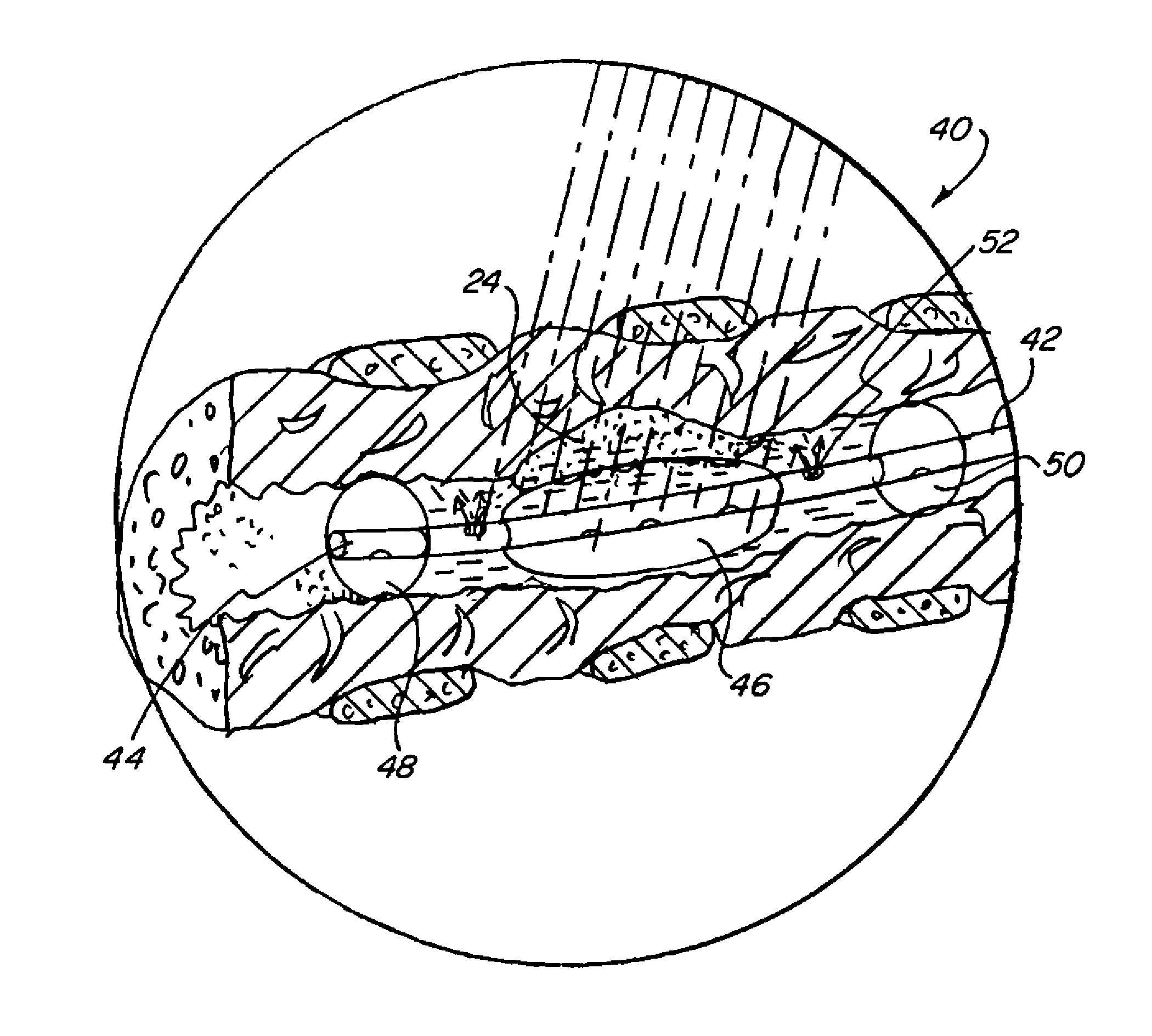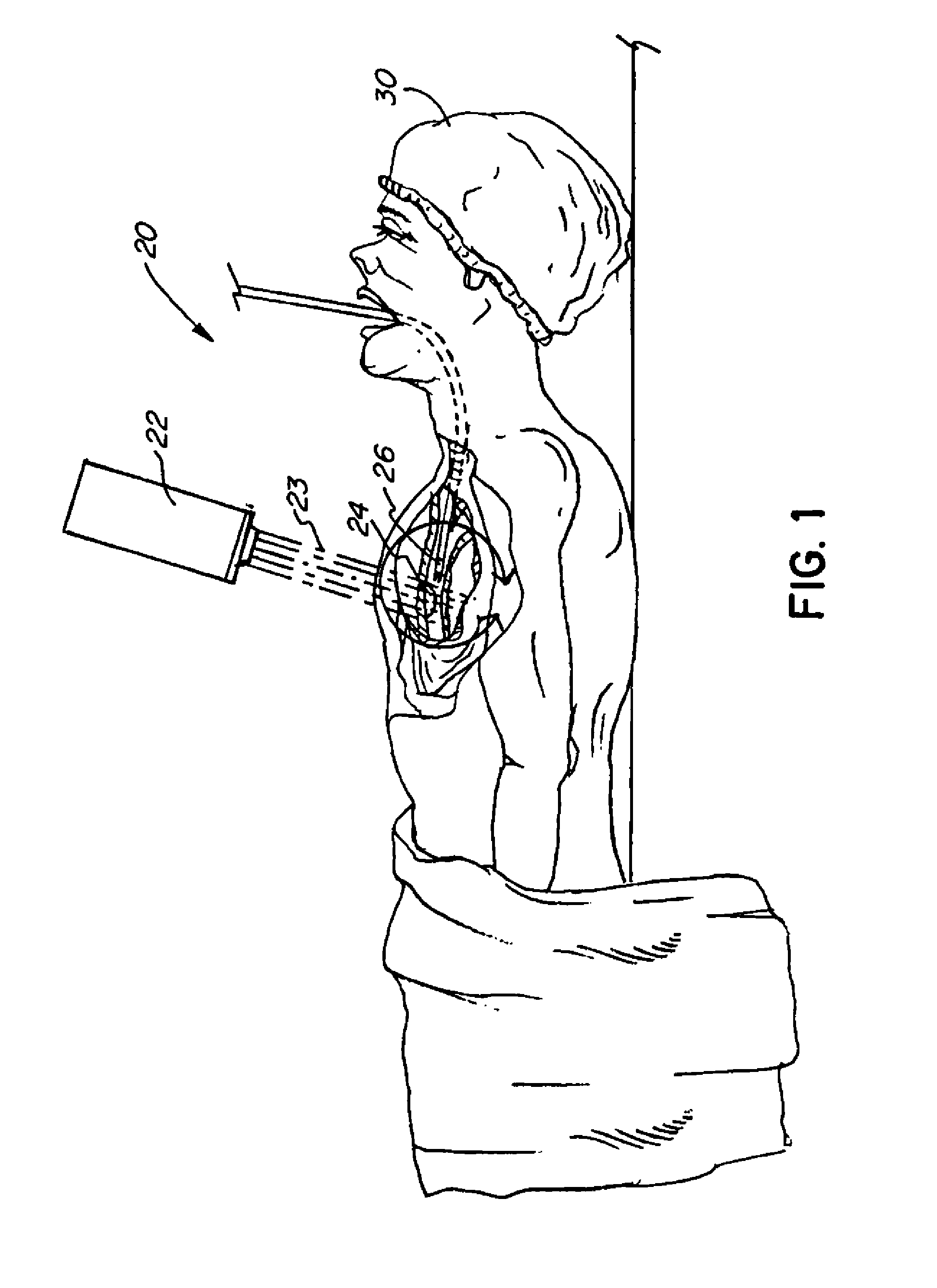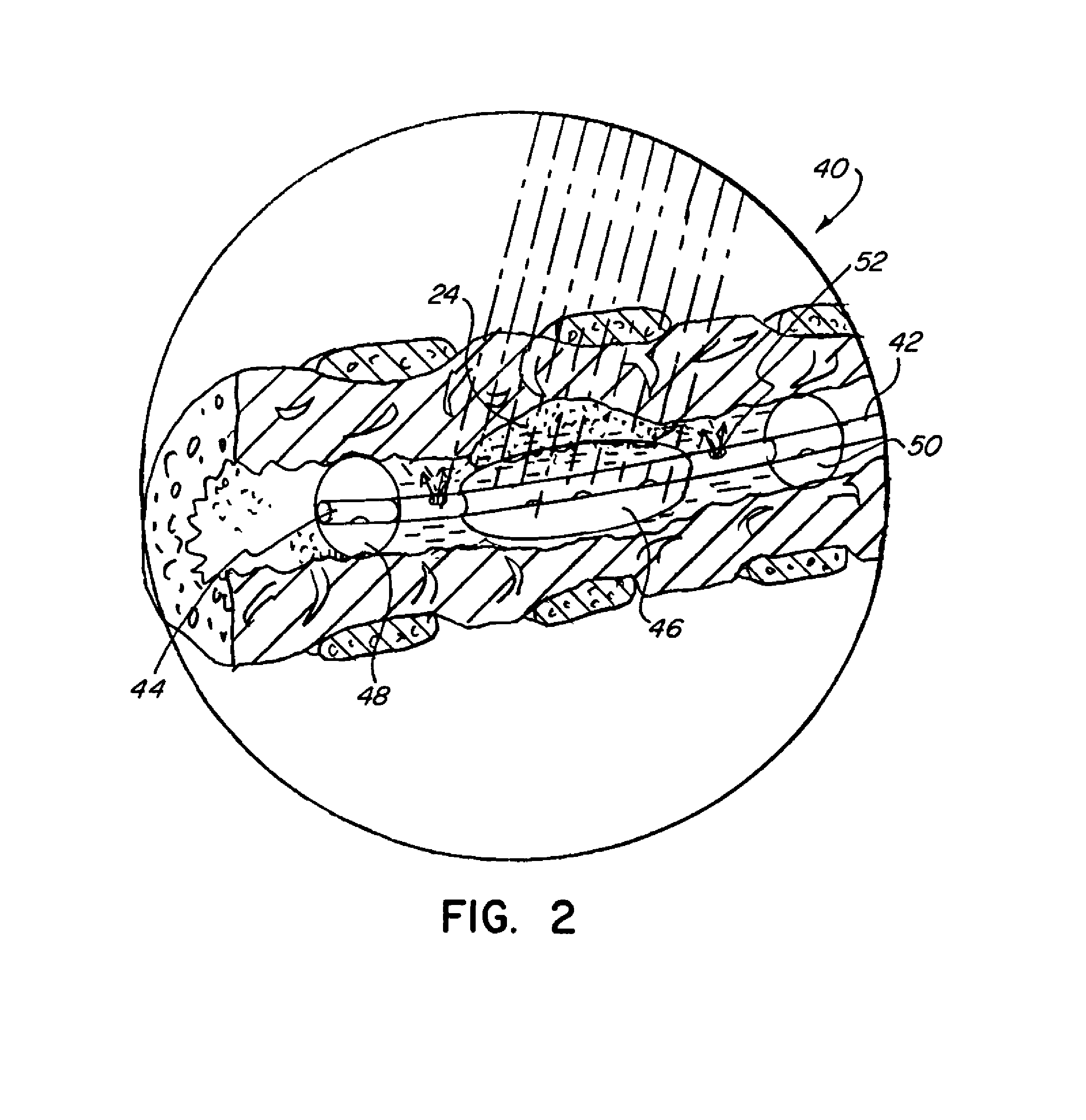Photodynamic therapy for tumors with localized delivery
a tumor and photodynamic technology, applied in the direction of dilators, surgery, therapy, etc., can solve the problems of tumor cells deficient in oxygen, and insufficient vasculature formation
- Summary
- Abstract
- Description
- Claims
- Application Information
AI Technical Summary
Benefits of technology
Problems solved by technology
Method used
Image
Examples
Embodiment Construction
[0049]The present invention provides improved methods of treatment of hypoxic malignant tumors with localized oxygenation and synchronized radiation treatment. The methods comprise the steps of positioning a delivery device in a bodily cavity adjacent to tumor tissue, delivering a photosensitizing agent to the tumor tissue and / or an oxygenating agent to the tumor tissue via the delivery device, and radiating the tumor tissue with light and / or radiation or both.
[0050]The basic components of a treatment system useful in the methods of the invention are illustrated in FIG. 1. As used in the description, the terms “top,”“bottom,”“above,”“below,”“over,”“under,”“above,”“beneath,”“on top,”“underneath,”“up,”“down,”“upper,”“lower,”“front,”“rear,”“back,”“forward” and “backward” refer to the objects referenced when in the orientation illustrated in the drawings, which orientation is not necessary for achieving the objects of the invention.
[0051]The system (20) includes a radiation source (22) ...
PUM
| Property | Measurement | Unit |
|---|---|---|
| radiopaque | aaaaa | aaaaa |
| photon energy | aaaaa | aaaaa |
| mass | aaaaa | aaaaa |
Abstract
Description
Claims
Application Information
 Login to View More
Login to View More - R&D
- Intellectual Property
- Life Sciences
- Materials
- Tech Scout
- Unparalleled Data Quality
- Higher Quality Content
- 60% Fewer Hallucinations
Browse by: Latest US Patents, China's latest patents, Technical Efficacy Thesaurus, Application Domain, Technology Topic, Popular Technical Reports.
© 2025 PatSnap. All rights reserved.Legal|Privacy policy|Modern Slavery Act Transparency Statement|Sitemap|About US| Contact US: help@patsnap.com



